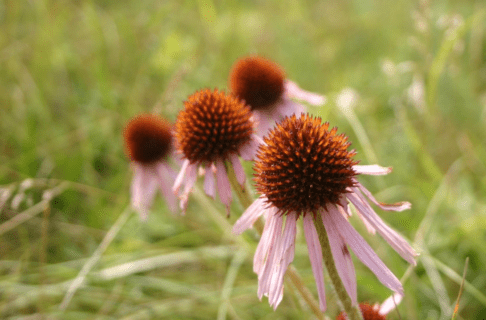Posted on: Thursday October 10, 2013
One of the great things about working at the Museum is being able to see all sorts of specimens and artifacts up close. When I first started working here, I used to enjoy looking through the Natural History cabinets on my lunch break. Creating temporary exhibits in the Museum’s Discovery Room is a wonderful way to share some of my favorite things in the collection with our visitors.
As I was brainstorming for a theme for my new exhibit, the phrase “tree of life” popped into my head. This term usually refers to evolutionary charts showing how species are related to each other. But the Trees of Life exhibit focuses on the ways that trees unintentionally help other organisms, such as lichens, fungi, insects, birds, and mammals, to survive. Since humans also depend on trees for many things, I decided that a case with some wooden artifacts would make an appropriate addition, and provide me with an excellent opportunity to poke around in the Human History collections for a change.
So I combed through the cabinets looking for things related to trees. I found a great collection of colourful lichens growing on bark and twigs. I am especially fond of the vibrant yellow wolf lichen (Letharia vulpina) partly because I collected it myself and partly because it’s really poisonous.
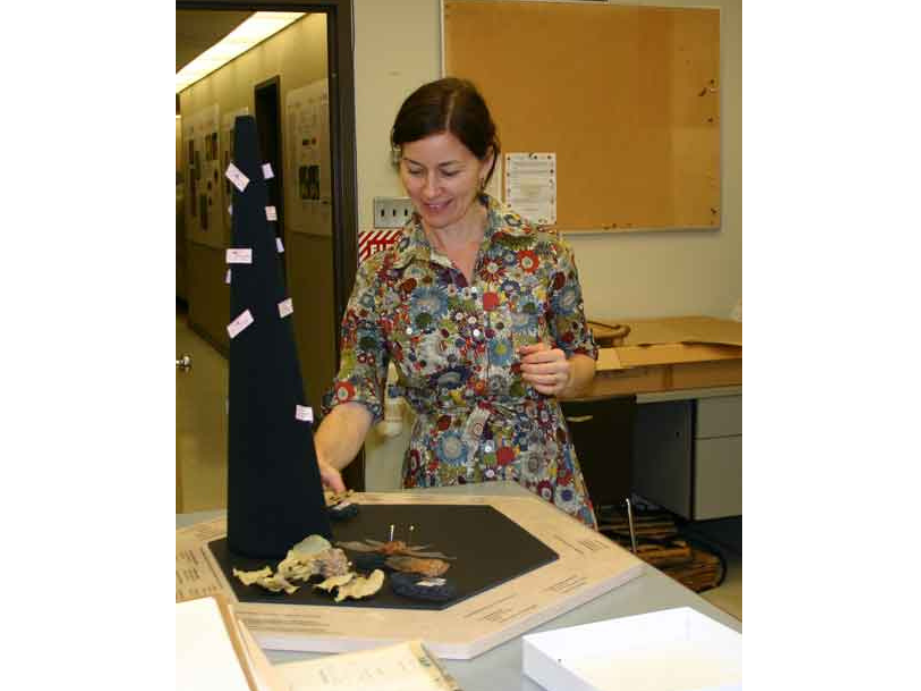
Exhibit Designer, Stephanie Whitehouse, testing the case layout.
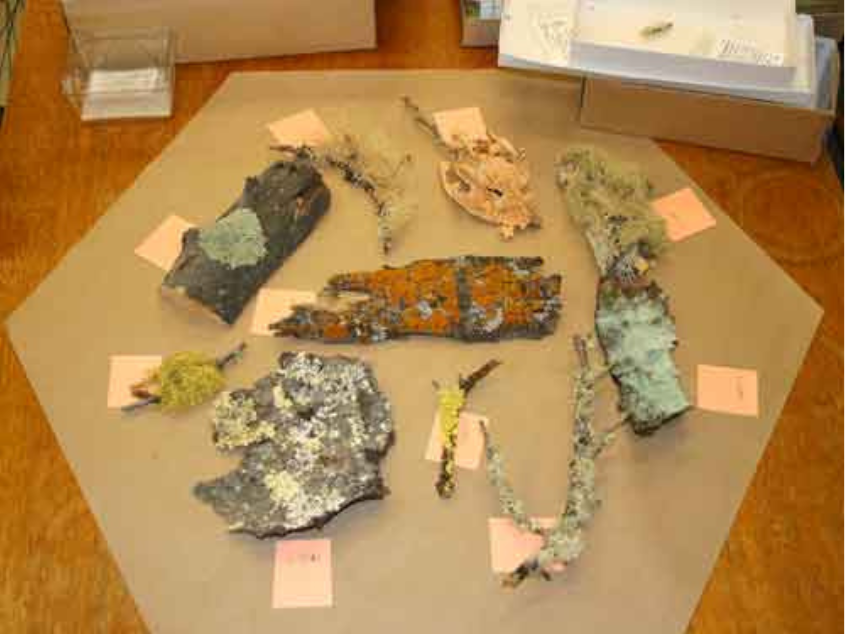
Testing the layout for the lichen case.
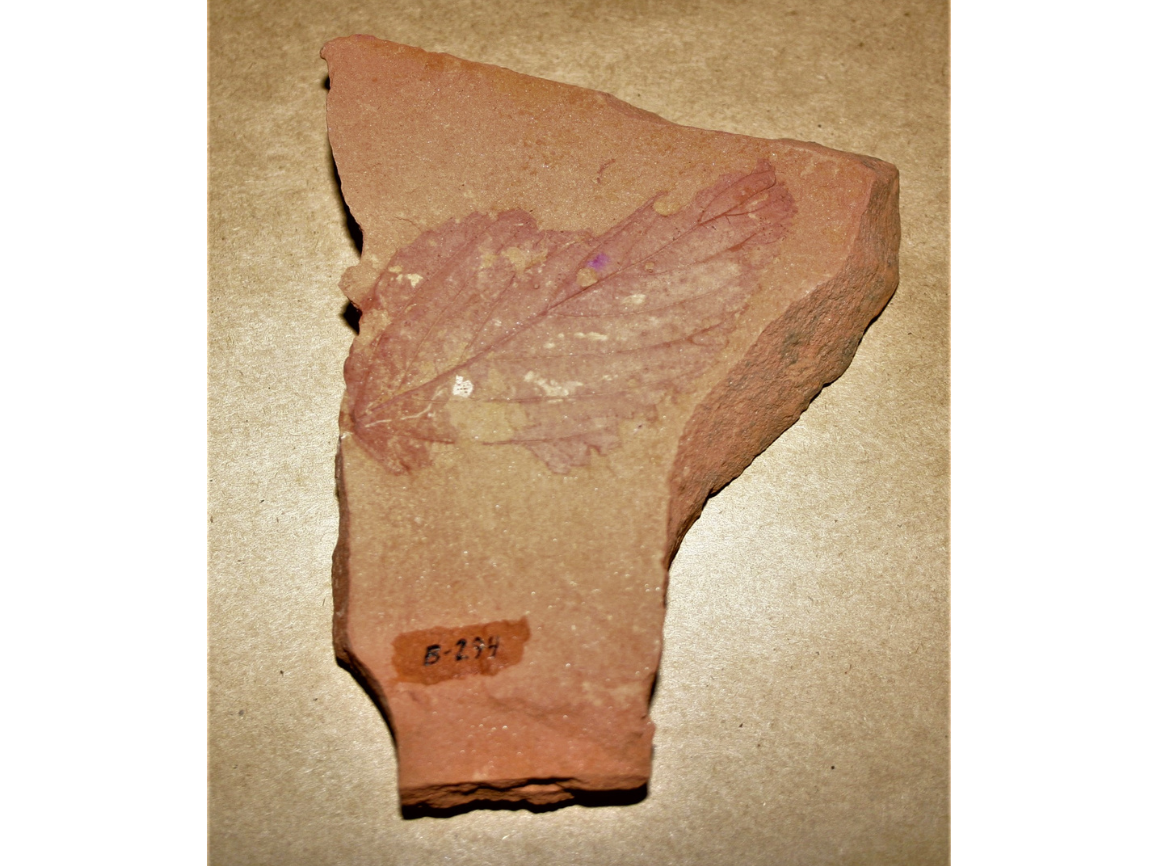
A fossil leaf impression preserved in a layer of baked shale.
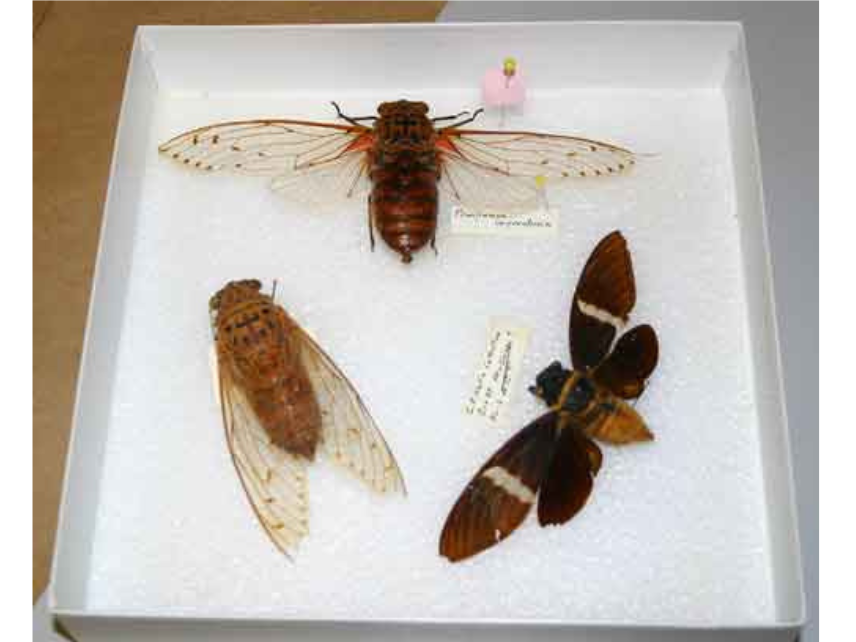
The palaeontological collection has some fabulous specimens of fossilized wood and leaves. My favourite specimen contains a fossil leaf in baked shale. This happened when a coal seam underneath a shale layer caught fire, turning the normally gray rock a lovely salmon colour.
The Museum has several huge tropical cicadas that I think are really cool. You may have heard that the American 17-year cicadas (Magicicada) hatched this year. Cicadas are fascinating insects that depend heavily on trees, although you wouldn’t know it because rather than chomping on the leaves, they feed underground on the roots. Specifically, they tap into tree roots and suck out the sap. Since tree sap is low in protein, it takes the cicadas a long time to grow into adults.
Image: Tray of giant cicadas.
Selecting items for the case of wooden artifacts was extremely difficult as we have so many beautiful pieces. I tried to select artifacts from many cultures, and for many purposes so there are clothes, furniture, toys, and tools from around the globe. One of my favorite pieces is a coat made from the inner fibre of a paper mulberry (Broussonetia papyrifera) tree from the South Pacific.
But my favorite piece of all is a bur oak (Quercus macrocarpa) tree that grew around a pitchfork. It reminds me that human endeavors are fleeting and that nature will reclaim everything in the end.
Trees of Life will be on display from October 10, 2013 to April 13, 2014.
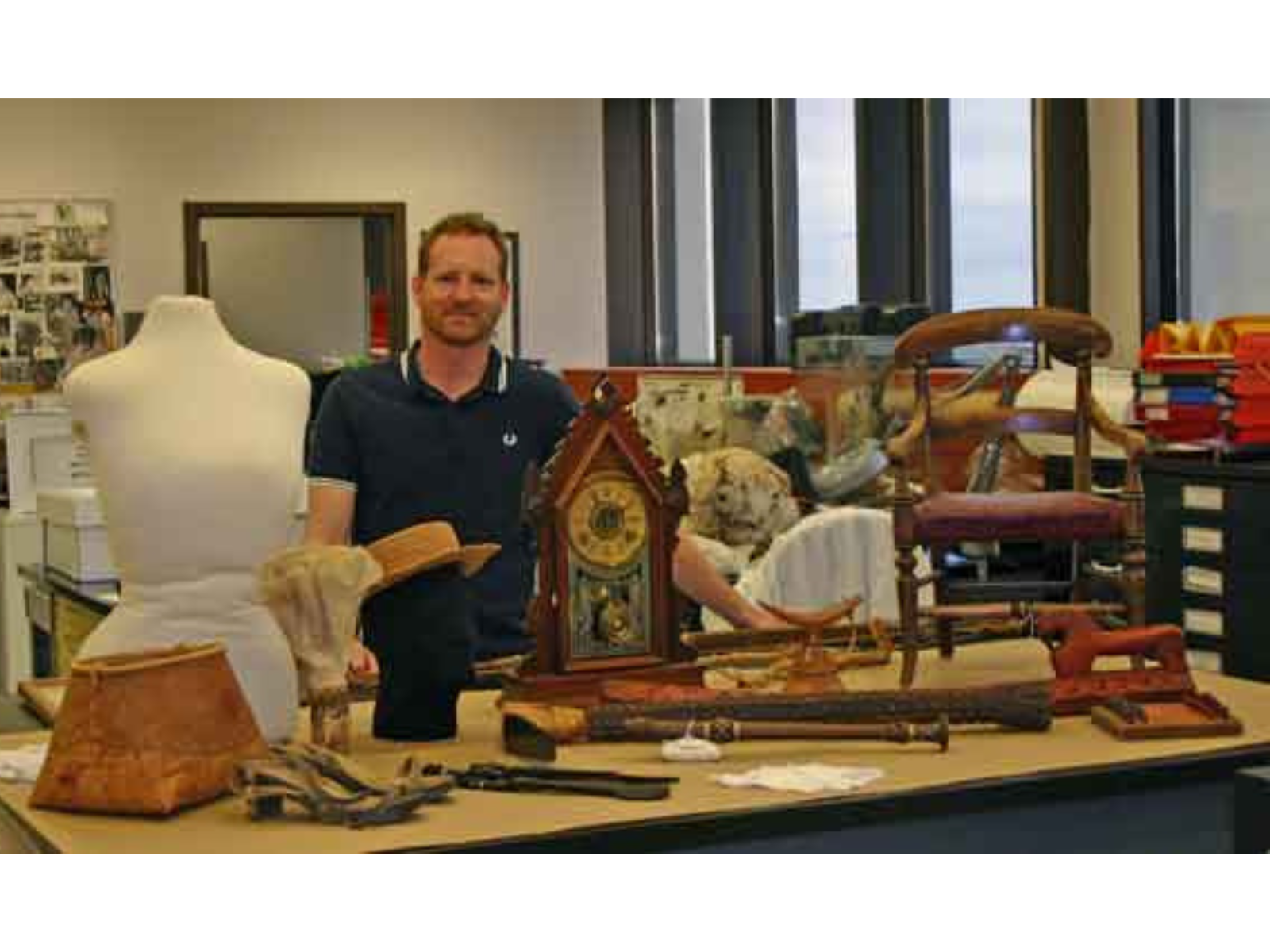
Curator of History, Roland Sawatzky, with wooden artifacts.
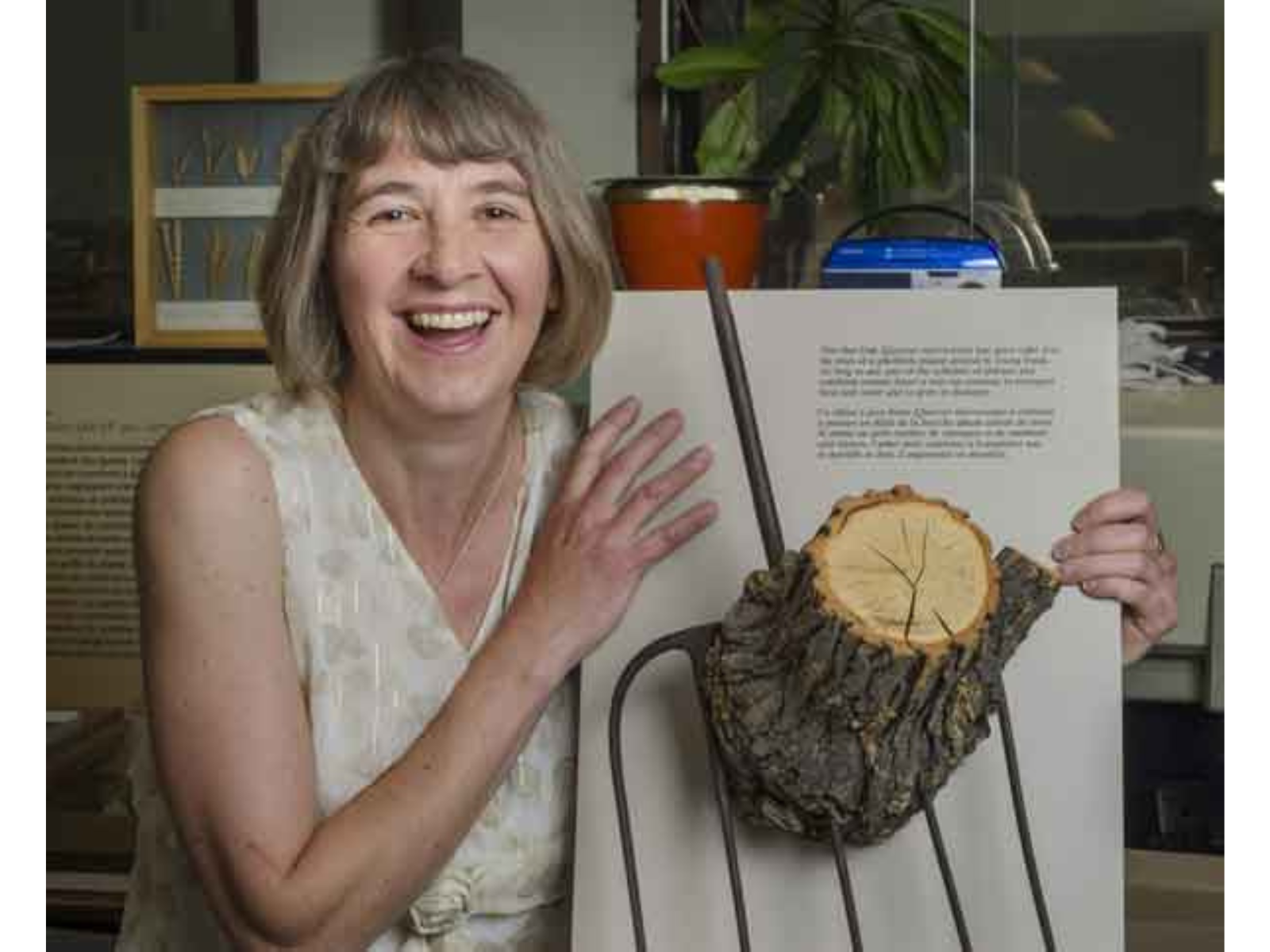
Me with the pitchfork-eating tree!





